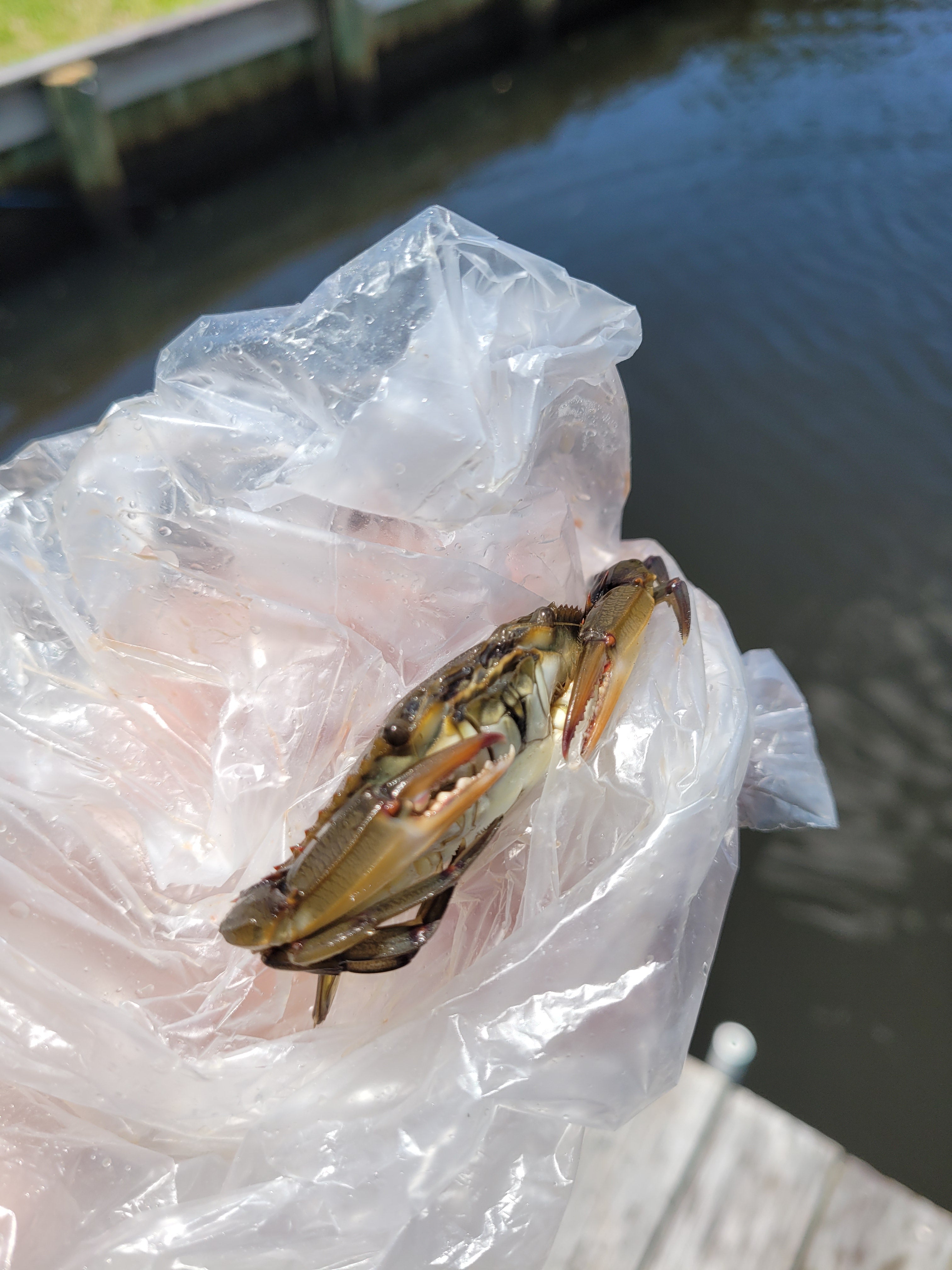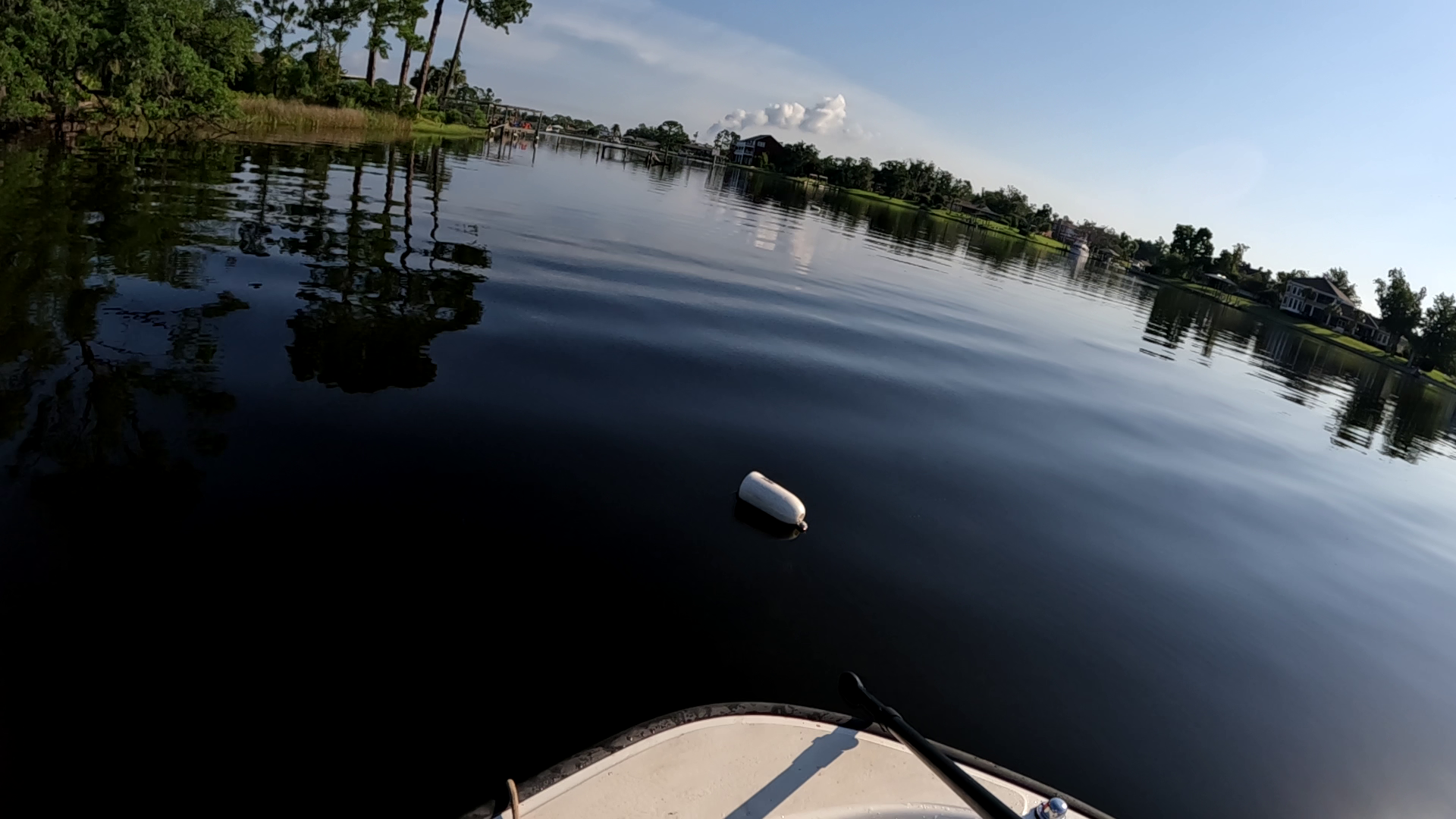Chasing Panama City Blue Crab with Traps in the Heat of Summer
Eugene L. 06.17.22
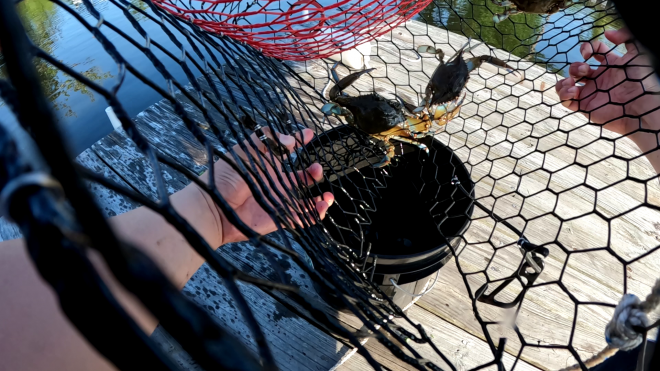
Panama City Blue Crab trapping has been a summer tradition for my family for as long as I can remember. We would go down to Captain Anderson’s Marina, near where they cleaned all the fish from the charter fleet. Get some fish heads and carcasses from the fish house. Then, drop down hoop nets loaded with the parts as bait to catch a few gallons of blue crabs. A great way to spend an afternoon as a kid. With the prize being a pile of delicious, sweet blue crabs.
That was over a couple of decades ago now, and things have changed a good deal since then. The fish house practices have changed at the marina now and the crabs are no longer there. I have upgraded from cheap $3 hoop nets that we used to run to now have a set of 5 crab traps. A good crab trap can run about $40, so to get a legal trap limit of 5 traps is not a cheap thing, but think of spending the money as an investment for the future. Cry-once, buy-once, the cheaper traps I have bought are already rusting and giving out. While on the other end, the nicer traps are still in good condition and not rusting despite being a year older.
Now for bait for the crab traps, I used a mix of bait for them. I had pre-frozen plugs of tuna scraps and trimmings from work. As well as fish frames, fish guts, and fish heads. The plugs were convenient to use, very oily, and bloody, but the pinfish would clear them out of the traps in a day. The frame and guts would last longer, but didn’t throw an oil slick as the tuna scraps did.
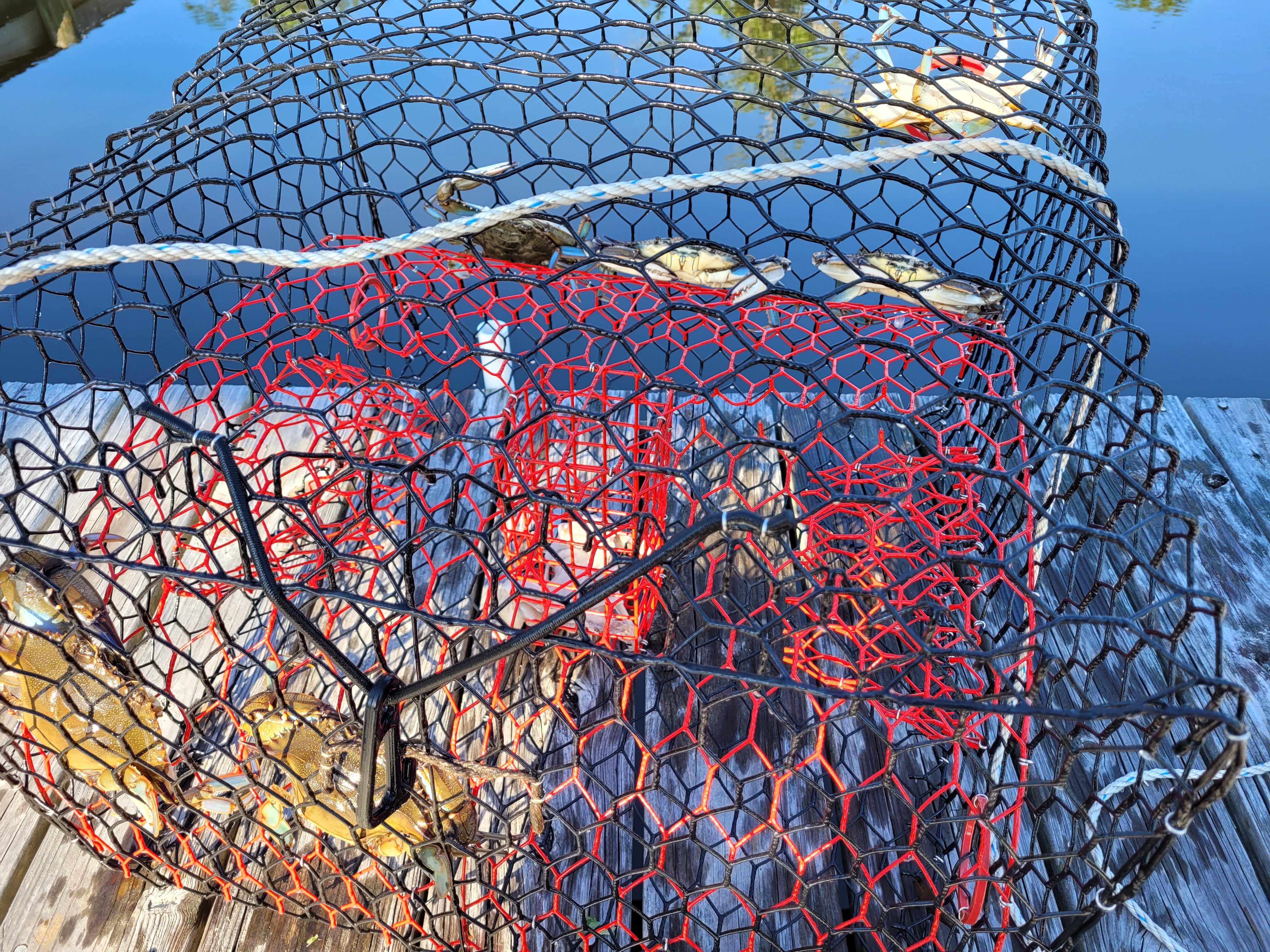
The dockside crab trap produced the best over the duration of the trip, but was also in the water the longest. Setting up the traps was pretty straight forwards. Bait the traps, make sure everything is closed, toss them out, and then check on them occasionally. Not a very involved process, but definitely a rewarding one. On this trip, I used mostly fish guts and frames that I had left over from cleaning fish from an offshore fishing trip the day before. I had set four of the traps throughout the bayou and set one right off the boat dock.
When you set your traps, try to pick deeper spots in the bayou or bay you’re crabbing in. Make sure you are not setting traps in the navigation channel, too. That’s a good way to lose traps and is hazardous to others on the water. Leaded line is also your best friend, the rope will sink instead of float on the surface like poly-ropes do. That way there’s even a reduced chance of a boat prop cutting them off.
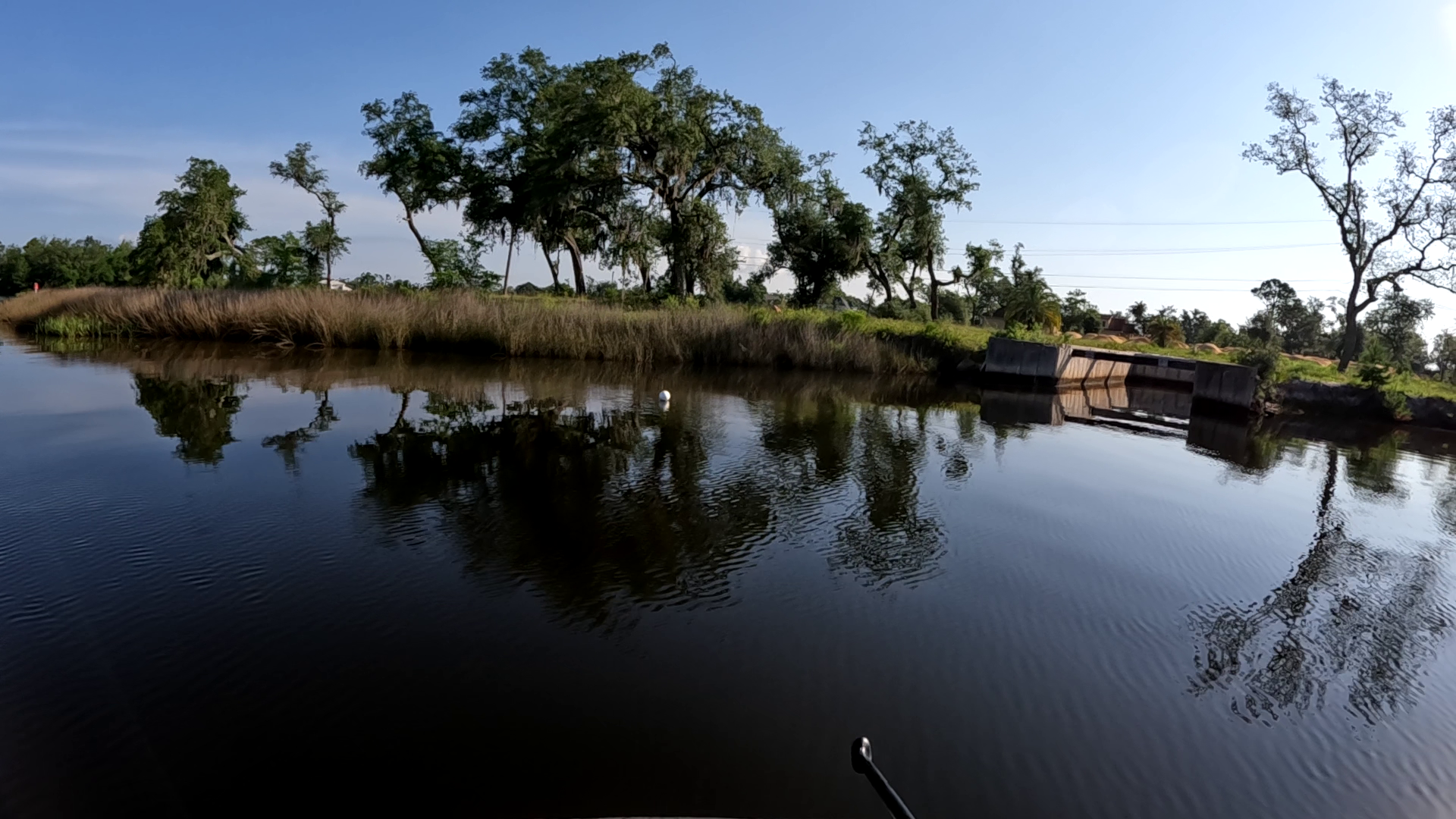
I ended up choosing an inflow near some grass, a seawall, and a couple of deeper spots near the channel, but far enough from it to be not a hazard. While at the same time avoiding other crab traps that other people already set out. The fifth trap stayed tied to the dock because it produced well. Don’t leave crabs to find more crabs. I set them out right before sunset because Florida is hot in June. They got an initial soak overnight to see how the spots would produce and see if they needed to be adjusted and moved.
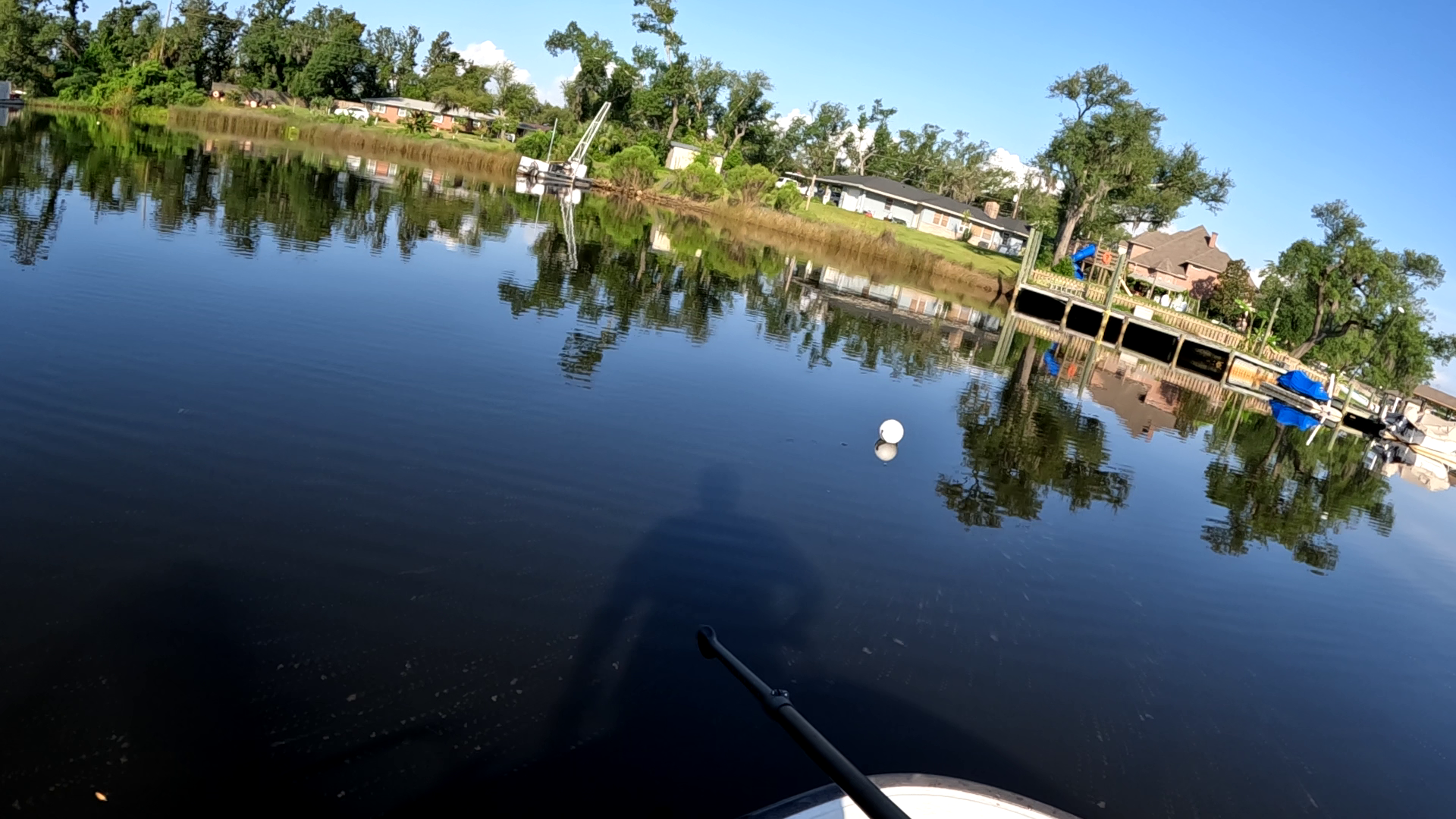
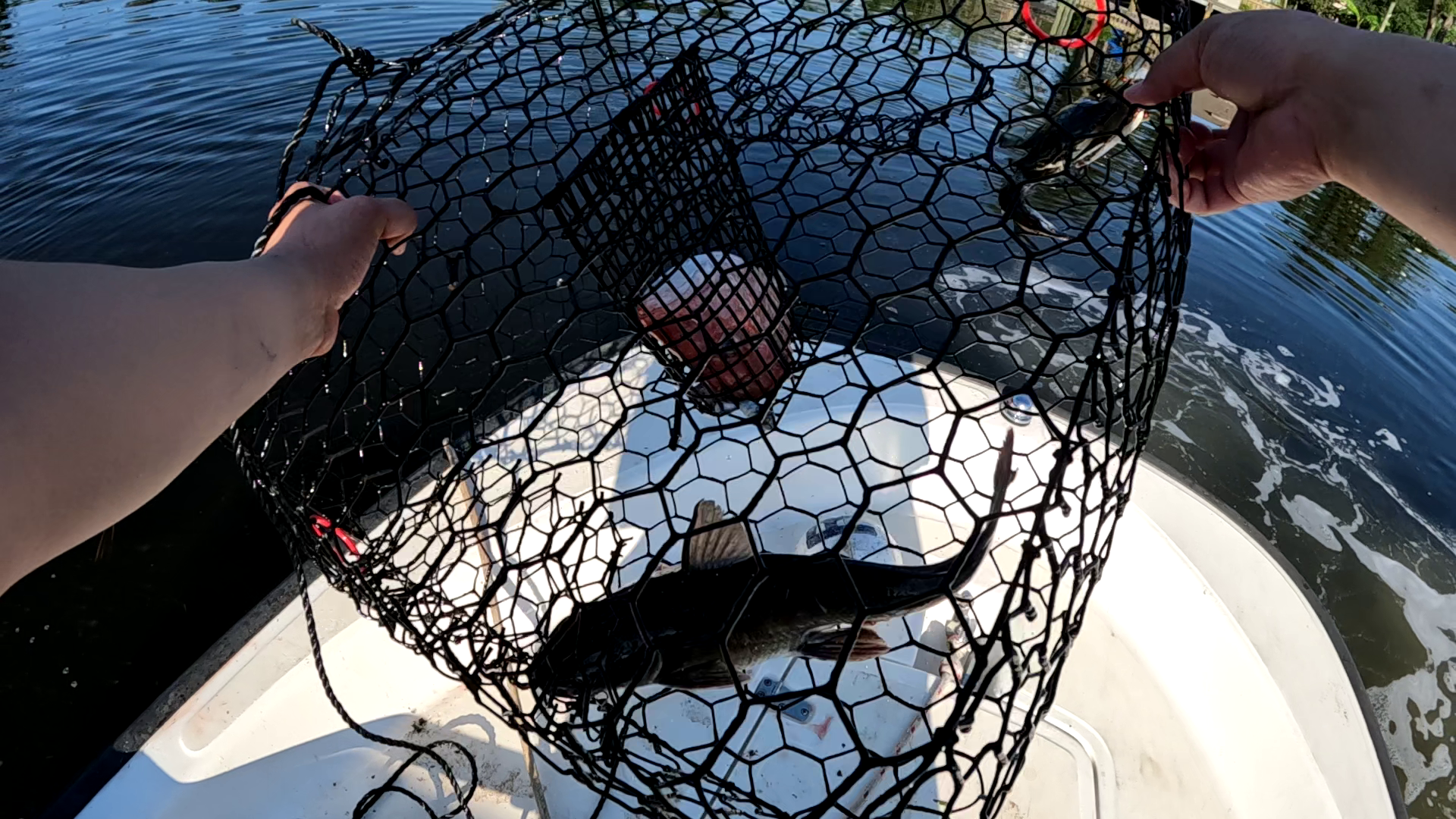
After a night of soaking, I went out the following morning and 3 of the traps produced 2 blue crabs a piece with the fourth trap being empty. There was also a catfish or two caught in the traps. The neat thing about catfish is sometimes the crabs will actually eat them if they get stuck. So, they become free fresh bait for you. That crab trap by the dock also produced 3 more crabs. Sometimes you just don’t have to travel far for crabs, but you don’t want to overload an area with traps, it’s counterproductive to have traps too close together.
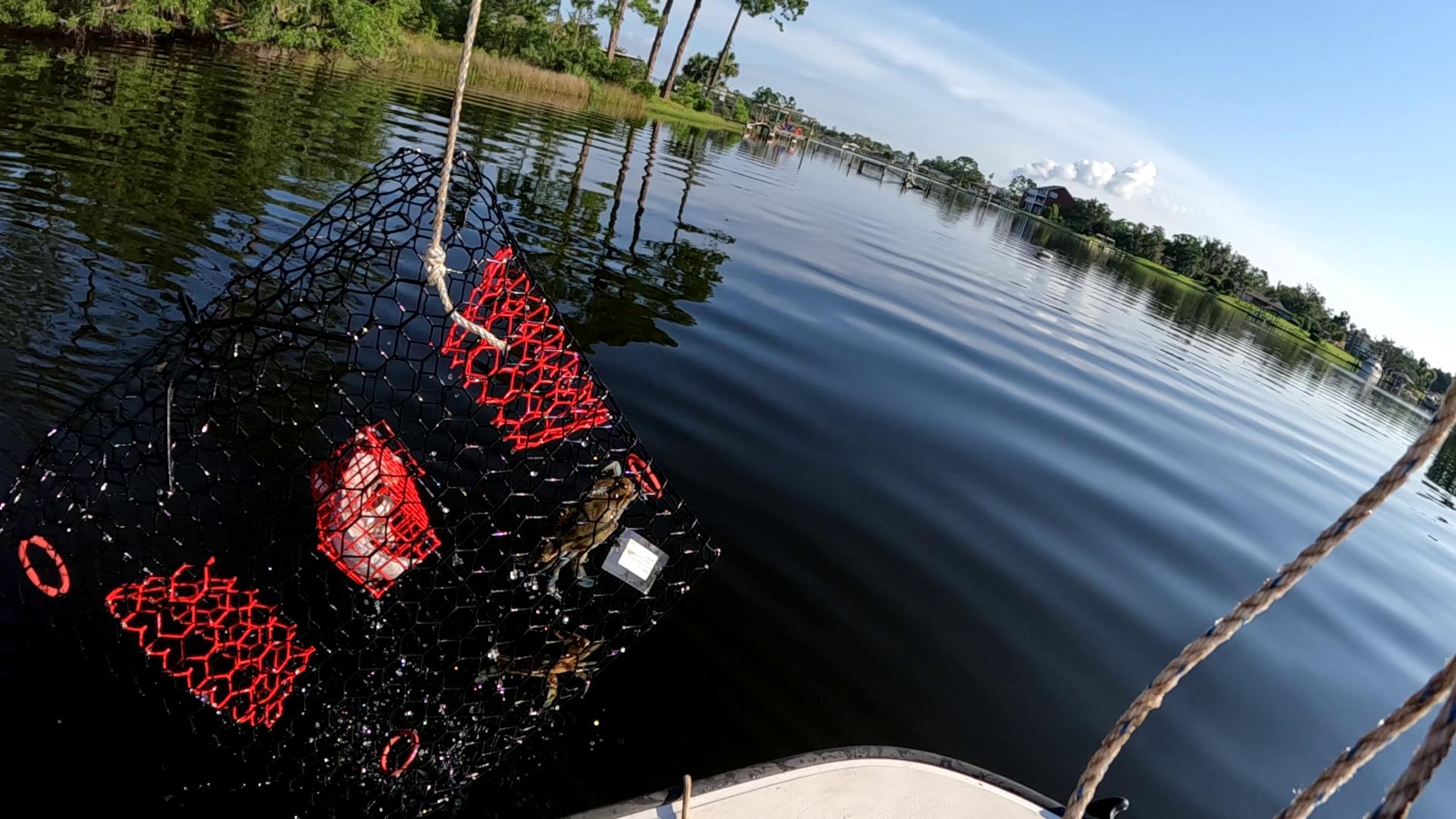
With almost all the traps producing some Panama City Blue Crab, I thought it best to leave the pots where they were originally dropped. This produced another 10 crabs the following day before we had to head home. With how hot the water was I was more than happy with a couple of dozen crabs caught in a couple of days. Several of the first batch of blue crabs ended up in the pot for dinner that night, I’ll show ya’ll how to cook them up in another article.
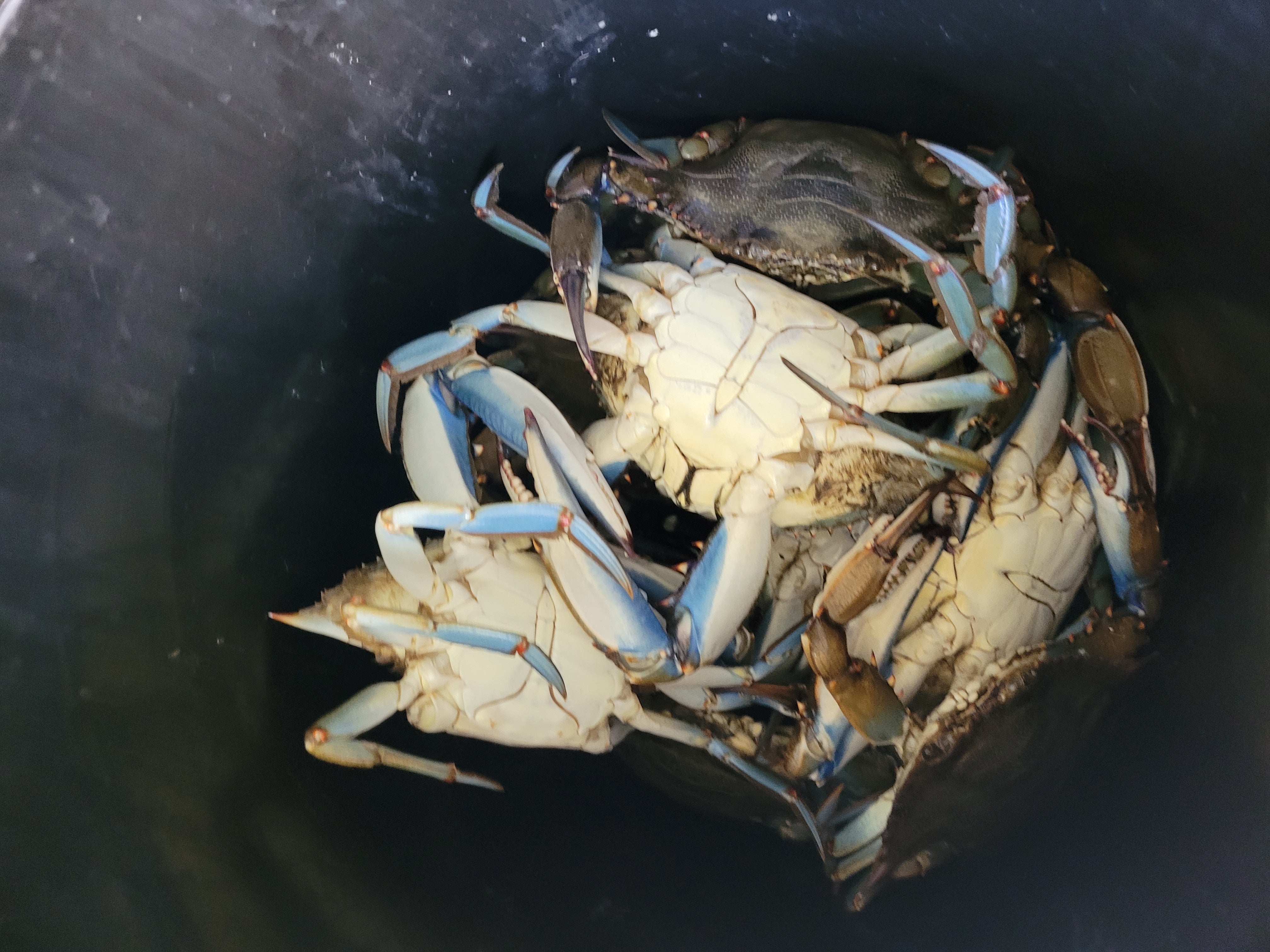
You can catch little Panama City Blue Crab like these in your crab traps as well. They usually escape out through the openings for small crabs or the mesh itself, but if you do catch some, they are great live baits. You can just crush their claws with pliers and they’ll drop them. Don’t yank on the claws, that will kill them. You want them declawed so they can’t pinch you or other crabs in the bait bucket or live well. This particular guy was extra nippy so I used the plastic bag to trap him. The small crabs can draw blood easily with their sharp little claws.
